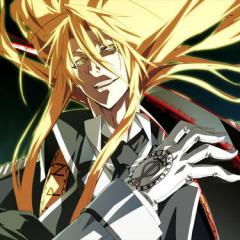Leaderboard
Popular Content
Showing content with the highest reputation on 05/01/18 in Blog Entries
-

Killer is Dead: The Case for Aesthetics
Plk_Lesiak and one other reacted to solidbatman for a blog entry
About a year and a half ago, I completed the Suda51 title, Killer is Dead. I honestly am not sure what happened but I will do my best to sort it out. Despite me not knowing really what was happening, something aside from the mediocre gameplay kept me going. It was the aesthetics. I'm done with that bit now btw. Spoilers ahead. The whole point of this post isn't to discuss the story or the quality of the game Killer is Dead, but rather to examine the art style and how it made me want to complete the game. Killer is Dead is a hack and slash game from the mind of Suda51. Opinions on his ability to craft a good game aside, his art direction tends to be on the more creative side. The art of Killer is Dead is why I set aside my qualms I had for the gameplay and story and found myself continuing to play it to completion. Take David for example... He some sort of king or something living on the dark side of the moon. But what stands out to me isn't his story. It's his god damn gold clothes. When the first major boss of the game looks like this, I cannot help but be intrigued. I honestly remember nothing about David except that the little shit shows up and ruins breakfast at one point in the game while wearing a stupid shit eating grin as shown here. This is a man set on ruining your breakfast. I think he might have been your brother or something but he time traveled and killed your mom at breakfast [citation needed]. But lets take a look at some of the other screenshots from the game. I honestly don't remember what any of these are from in the game, but the actual visuals of the game are what stick with me after all this time. Not the gameplay, or the story, but just the visuals. That leads me to my rambling point that I haven't argued. Graphics can totally be the only thing a game has going for it and that is fine. Killer is Dead is a prime example of this. The gameplay is forgettable, while the story is only memorable because it is driven entirely by the unique art direction of the game. Killer is Dead was entirely worth the time and money I spent on the game for one reason: it was so damn interesting to look at. Now I want to look at a more mainstream example of a game with a strong, unique, direction of art. Persona 5. Now now, I am not shitting on the game right now. That is for an upcoming blog post. But, when we get down into the nitty gritty details of the gameplay of the sequel, it really isn't much of a step forward for the Persona series as a whole. Some interviews from the development team likened to jump from 4 to 5 like the jump from the P2 duology to Persona 3 [citation needed]. What we got, however, was just an expanded 4 with most mechanics renamed and a mild rehash of the story from 4. What makes the game seem as if it is a completely new leap forward for Persona, in my eyes, is the amazingly slick visuals and art direction. The art sets the game completely apart from Persona 3 and 4 with character cut ins and super stylized labels and text. Persona 5, unlike Killer is Dead, has much more solid gameplay that actually does hold up on its own without the eye popping art direction. I'm not so sure that if Killer is Dead featured a more bland style of art, that I would remember it, or even finished it. Lets take another Suda51 game as an example; Lollipop Chainsaw. I never could finish the game. The game's poor frame rates and some what repetitive gameplay killed it for me, but what had kept me going was the candy popping colors of the game. Then I got stuck on some part and stopped caring, but before that, the art direction, once again, had kept me going in that pretty mediocre game. What is the final point I want to make? Well, that I am a fucking idiot that lets pretty colors dictate what games I finish and what I set aside. Also look at this unicorn from Killer is Dead2 points -
Yes, I did this game first. This is one of those games that is a bit hard to define. It is part moege, part nukige and part charage... and part surrealist story. It is about cats being reborn as humans being reborn as cats being reborn as humans (it gets ridiculously complex, to the point where there is no point in keeping track). There also isn't a whole lot to say about this game... it is mostly at-home SOL, h-scenes, and reminiscence of past lives. As a VN, it is a bit hard to read because it jumps around in time so much, and I'll probably forget this VN before long. However, I gave it an extra point for making me cry several times, lol.1 point
-

Venus Blood: Ragnarok
BookwormOtaku reacted to Clephas for a blog entry
Yes, you were waiting for it, all you tentacle-loving freaks... this is the newest game in the Venus Blood series, as full of tentacles and sex-training as any of the others... I come to you having finished the Law route and after being forced to go back a chapter in order to get to the Chaos route on my second playthrough (apparently you absolutely have to start the 'goddess insanity' chapter, by failing to complete one of the monster-hunting side-quests). The gameplay will be familiar to anyone who played Hypno, though there are differences introduced in the unit-creation screen, just as in all the others in the series (every game puts its own twist on this aspect). It is the sequel to Frontier, occurring some three hundred years later, and it is based off of a partial 'fallen goddess but still on Law Route' path. The biggest difference in the gameplay from previous entries is the introduction of a 'research' system where you basically have to open each step in a tree to get access to other units. You expend medallions to get particular units on each 'block' that you've opened up, and what medallions are available to you determine what units you can access and how much of each tree you can complete (it is impossible to get access to all medallion types and units in the first or even the second playthrough due to difficulty and route issues). While this might not sound that different in fact, it was a great difference visually, making access to the various monster types more obvious than in previous entries. The system of 'leveling up resources' is back from Hypno, allowing you to use research to level up your auto-healing, auto-experience gaining, and automatic resource allowance (at the end of each turn) independent from what places you've captured. I advise anyone planning to do multiple playthroughs to get everything as high as possible (focus on healing over experience and all the other resources before gold, since gold is the most plentiful resource). Story-wise... it is standard Venus Blood. You come, you conquer, and you decide whether to make the goddesses love you normally or just drive them crazy through sex training. The actual basic plot is inferior to both Frontier and Hypno, though it it is more 'stable' in that it doesn't trip up in the last chapters like in the previous games. Unfortunately, this game suffers somewhat from being a direct and obvious sequel, as the shadows and persons of characters from the previous game pop up everywhere, distracting you from the protagonist's story. I need to say something about the Venus Blood games here... it really is a shame that this company doesn't go 'legit' and start making non-ero games. The complexity of the skill system and the way you can make levels almost irrelevant through simply combining the right units in the same squad is incredibly rewarding. This is actually only the second game in the series where I actually explored this aspect of the game in-depth, but I was seriously impressed with the degree to which you can customize your army, creating the ultimate force. In fact, it wouldn't be far from the truth to say the outcome of all battles is entirely determined by the way you design your squads. Sanah is something of a hard-ass when it comes for this game, always beginning on Hard mode... but I honestly don't recommend that for newcomers to the series. For one thing, the basic endgame difficulty level is pretty high even on normal difficulty, and playing hard mode on the first playthrough has certain annoyances like running short of resources at key points. Anyway, for gameplay, this, like most of the Venus Blood games, is fairly enjoyable. As a story? Lots of potential here, some really interesting points, but in retrospect the story pales somewhat in comparison to previous entries in the series as a whole, despite exceeding most previous games when it comes to the endgame story.1 point

